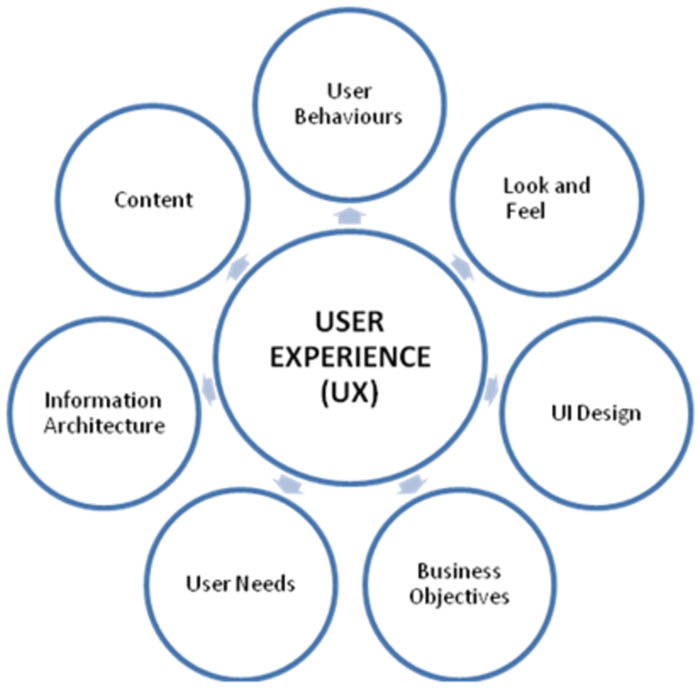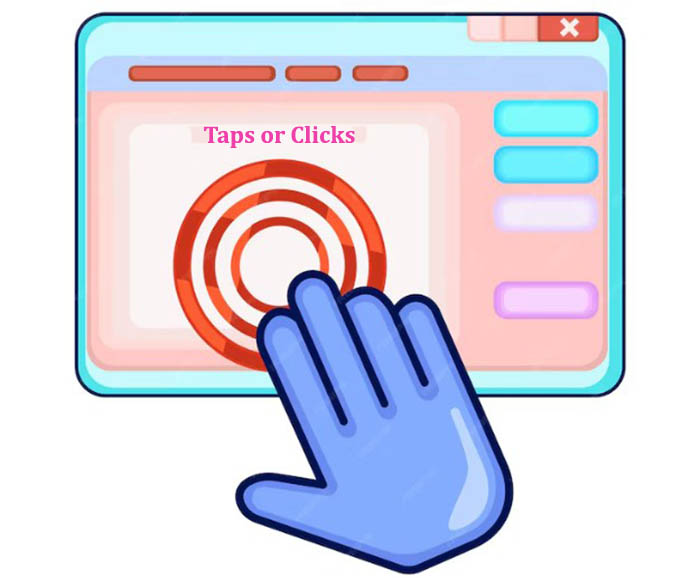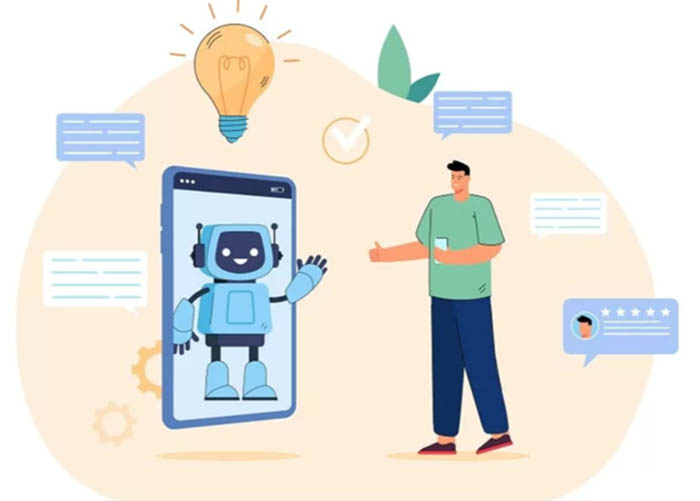Introduction
What is AI-powered design?
AI-powered design uses artificial intelligence to improve user experiences.
AI can learn how people engage with applications, websites, and other digital platforms.
It searches for trends in this information to determine what’s successful and what could be better.
For example, AI might notice many people getting stuck on a certain screen or button. It could recommend ways to simplify that part of the design.
When designing better UX for AI, it’s crucial to prioritize simplicity and intuitiveness to ensure user satisfaction.
Why is Good User Experience Important?

Image Source – https://blog.aspiresys.com/
When the user experience is excellent, utilizing the product is easy and even pleasant.
With the help of the best AI tools for UX designers, professionals can streamline their workflow and deliver impactful designs.
Having a great user experience matters because it keeps users engaged and happy as they interact with your product or service.
This applies to everything digital – like mobile apps, websites, and software.
On the other side, a negative user experience can cause people to hunt for easier and more welcoming alternatives.
In a world where customers have so many choices, getting the user experience right could mean everything for a business’s chance to keep and gain new customers over time.
Utilizing data-driven insights enables designers to make informed decisions that result in smoother interactions and ultimately lead to designing better UX for AI.
Now let’s look into why putting money and effort into great UX design is worth it:
Improved customer satisfaction
When your product just “works” and lets people accomplish their goals easily, they’ll be happier campers overall.
Decreased friction and frustration translate into stronger product affinity and loyalty from your user base.
They’ll be more likely to stick around as repeat customers and less tempted by competitors’ offerings. Consistent positive experiences breed consistency and stickiness.
Better Product Adoption and Engagement
Even the best product features are meaningless if users don’t know how to find and use them.
A well-designed, intuitive UX removes those barriers to adoption and engagement.
Clear navigation, visual guides, and intuitive workflows empower users to become proficient with your product quickly.
They’ll understand how to access all the capabilities and extract full value from their investment. Higher engagement leads to better retention and reduces churn.
Increased Conversion Rates
UX isn’t just about keeping existing customers happy – it’s also critical for acquiring new users and driving conversions.
An outstanding user experience can be a major competitive differentiator that attracts people to your product vs. alternatives.
If you’re UX guides prospective users through a seamless onboarding and purchasing process, you’ll see higher conversion rates.
Don’t underestimate the revenue impact of eliminating friction during those make-or-break first experiences.
Lower Support Costs
When user experiences are confusing or difficult to navigate, support requests and costs inevitably skyrocket as a result.
But when you invest in UX upfront during the design process, you can prevent many of those “how do I…” problems from occurring.
Thoughtful UI patterns, instructional elements, and properly managed expectations all reduce the need for handholding.
With a solid UX, your customer support load stays manageable while operating costs remain lean.
Find out how utilizing generative AI consulting services can streamline the development of user-centric AI designs.
1) Keep Things Simple
The Fewer Taps or Clicks, the Better

In making a great user experience, it’s key to keep everything easy. Avoid giving people too many choices or too much info all at once.
Streamline every process down to only the essential steps required. Make every interaction as smooth and straightforward as possible.
Cut Out Clutter and Distractions
AI can analyze usage data to pinpoint areas of clutter or confusion in your design. It can then suggest ways to simplify screens, menus, and workflows.
This decluttering creates a clean, focused experience tailored to what users need.
2) Make it Personal
Use Data to Adapt to Individuals
While simplicity is key, you also don’t want your product to feel impersonal or rigid. AI enables you to adapt and personalize the user experience for each individual based on their data.
For example, AI can study a person’s usage patterns, preferences, and in-app behavior.
It can then dynamically customize interfaces, features, or content recommendations to fit that specific user.
The more someone uses your product, the more personalized and tailored to them it becomes.
Get the Right Context
AI is also good at understanding context, not just individual users. It can factor in signals like location, time of day, language preferences, and device type.
Then it can automatically adjust the UX to make it maximally relevant and useful for each particular context.
3) Give Clear Instructions
Even the most intuitive designs sometimes require instructions or guidance, especially for new users. AI can help ensure these instructional elements are clear, effective, and well-timed.
Break Things Down Step-by-Step
Instead of dense paragraphs of text, AI can recommend breaking instructions down into clear step-by-step sequences matched to each workflow.
These steps can then be displayed visually alongside the actions they describe.
Visual guides like tooltips and coach marks can dynamically draw users’ attention to highlight the exact elements and next steps.
This helps people follow along without feeling overwhelmed or lost.
Provide In-Context Guidance
AI can also help detect when users are struggling or stuck, and then proactively offer contextual guidance and support.
This could include strategically timed hint modals or even chat-based virtual assistants, or AI Voice assistants.
The key is giving people the right amount of helpful information at the precise moment they need it.
Not too little guidance that they feel lost, but not too much interruption that it breaks their flow either.
4) Use Plain Language
Keep Messaging Simple and Conversational

Image Source – https://www.splitreef.com/
Nothing destroys a user experience faster than ambiguous, overly complex language.
AI can recommend methods to make instructions, error notices, and other content more natural and approachable.
Simple language decreases cognitive burden and puts consumers at ease.
Localize Content Accurately
If your product serves an international audience, consistent voice and messaging across all languages are essential for a cohesive experience.
AI translation tools can help ensure all localized content retains the same simple, conversational tone of the original.
AI can also flag any text that is tricky to translate or may not make sense in certain contexts or cultures. This helps content teams adapt phrasing as needed to resonate better locally.
By incorporating the best AI tools for UX designers into their process, professionals can enhance usability and satisfaction for end users.
5) Be Helpful and Friendly
In addition to using plain language, an AI-powered user experience should strive to be helpful and friendly at every turn.
People should feel like your product is an assistant working alongside them, not just a tool.
Provide Proactive Assistance
With its analytical capabilities, AI can detect when users may need assistance even before they ask for it.
Maybe they’re lingering on a particular screen or repeating the same actions unsuccessfully.
In these situations, AI can trigger friendly microinteractions like tooltips or hint modals to gently provide support or it could prompt users to clarify their intentions through conversational AI like a chatbot.
The key is proactively addressing confusion before it turns into frustration.
Show Personality and Empathy
While being consistently helpful is crucial, you don’t want your product’s personality to feel robotic or cold either.
AI can suggest injecting appropriate emotional cues, like emojis, humor, or words of encouragement throughout the interface.
Little touches of empathy and rapport go a long way in making users feel heard, understood, and respected as individuals rather than numbers.
A friendly personality keeps the experience feeling warm and human despite being tech-driven.
6) Allow for Mistakes
Even with clear guidance, users will inevitably make mistakes sometimes. A forgiving, error-tolerant experience is essential to prevent frustration.
Make it Easy to Undo Actions
AI can identify areas prone to erroneous inputs or actions based on user behavior. It can then recommend implementing simple “undo” functionalities in those areas, like shaking to undo text or a prominently placed undo button.
This lets users recover easily from slip-ups without losing their progress or data.
It creates a lower-risk environment where people feel empowered to explore and learn through trial and error if needed.
Provide Actionable Feedback
When errors do occur, AI can ensure the right instructional feedback is shown at the appropriate time and place.
Error messages should clearly explain what went wrong in plain language, while also providing clear steps to resolve the issue.
Visuals like colorful toast notifications can grab users’ attention effectively yet without feeling disruptive or punishing.
The goal is to give constructive, bite-sized feedback so mistakes become learning opportunities.
Incorporating user feedback into the process of designing better UX for AI helps refine the interface and enhance overall usability.
7) Test and Improve
A key advantage of AI is its ability to continually analyze real user data to identify patterns and areas for improvement over time.
Run A/B tests
With AI, you can easily spin up different A/B test variations of UI designs or workflows. Then measure how real users interact with each variation to see what’s performing best.
Maybe changing the layout, colors, or microcopy of a particular screen increases conversion rates. Or perhaps adding an extra step improves task completion.
AI can dynamically run these experiments at scale to uncover optimizations.
Enhance Through Iteration
Even after launch, AI should keep monitoring usage data to detect new pain points or opportunities as they emerge.
This intelligence can then fuel an ongoing cycle of iterating and enhancing the UX over time.
If a specific interaction starts causing more rage taps or abandonment, that’s a good signal something needs to be simplified or tweaked.
AI translates these bumps into actionable insights so the experience keeps getting smoother with each update.
8) Respect Privacy and Ethics
Protect User Data

At a minimum, you must have robust data privacy and security measures in place to protect any user information your AI systems interact with. That includes things like:
Never share or sell personal user data with third parties without explicit consent. And be very cautious about what user data you even choose to collect and feed into your AI systems in the first place.
Prioritize Consent and Transparency
Beyond just securing data, you need to obtain proper user consent before processing their personal information in AI systems.
Don’t engage in undisclosed or secondary data uses that people wouldn’t reasonably expect.
Be fully transparent about your AI data practices.
Disclose what information gets collected, how it gets used to personalize experiences, and any third parties involved. Let users control their data-sharing preferences easily.
Conclusion
By harnessing the power of the best AI tools for UX designers, professionals can stay ahead of the curve and deliver cutting-edge user experiences.
When building an AI-powered user experience, which of these factors do you think is most important to prioritize?
FAQs
1) What data do I need to leverage AI for UX design?
Any user data you can collect is valuable input for AI – tap/click data, scrolling behavior, time on screen, conversion rates, you name it.
Qualitative data like survey responses or session recordings are great too. The more multimodal data streams you can feed the AI models, the richer insights and personalization capabilities they’ll provide.
2) How much does AI-powered design cost? Is it affordable for smaller companies/products?
The cost can vary but many AI design tools are becoming quite affordable even for smaller teams.
Cloud-based subscriptions with pay-as-you-go usage-based pricing are a common model.
There are also lower-cost pre-trained AI models that can get you started without a huge investment required upfront.
3) Won’t AI eventually replace human designers completely?
No, AI is a tool to augment and assist human designers, not replace them entirely. The “intelligence” in AI is still very narrow and specialized.
Designers provide the high-level vision, creativity, and context that AI lacks. AI handles the heavy data-crunching to guide decisions and optimize designs.
4) How can I ensure my AI-powered UX doesn’t feel impersonal or robotic?
Build in human-like qualities like conversational language, emotive cues, and persona-driven interactions.
Make the AI an “assistant” partnering with the user, not dictating commands. Allow for mistakes and provide understanding feedback. Most importantly, always user-test to identify areas feeling too robotic.





